 It really feels like fall here in Canada. We've got that rainy, wet leafy vibe going on. But I love that. Maybe I'm a knitwear designer because I love fall so much? Check out my new work here. I'm excited about the triangle mittlets and scarves. They will be up on my big cartel storefront soon. I've also had some requests for manuals and it seems like a fine time to just start offering my Dubied manuals as photocopied bound books to those interested. You can go here for that.
2 Comments
I picked up some Japanese machine knitting magazines as part of my ongoing research for collections and new technique ideas. Some of these are so fun and inspiring so I felt like sharing. There's a curious Victoriana feel going on in a late 60's/ early 70's kind of way. I love the subtle tailoring and the texture transitions. These magazines came with a front section of 30-40 styles shot in a fashion magazine format, followed by patterns in the back complete with diagrams and measurements. There are knitted bellbottoms, cropped intarsia tanks and all sorts of craziness. All I know is: I want that cape!
 Hi there. Happy New Years! I'm kicking off the New Year with a knitting technique share. I had heard of knit-weave (the three images below) but not of embroidery knitting. Embroidery knitting is defined as contrast thread woven into the knitted yardage vertically rather than horizontally as in knit-weave. See how a card is used to hold the contrast yarn? See further below for some great pattern designs and the pages that show how to wrap and manipulate the vertical card weaving. I can see using this for accessories and jewellery as well along edges of garments. This was found in an Empisal pattern book from the 1950's. I've also got some new work in my store here. You can enter 10OFF during january for a 10% discount. Another new development is my studio wiki page and a knitting wiki update. I decided that it is better to organize technical information in one place to benefit users. I also wanted to say thank you to blog readers, customers and store owners for supporting my work. It has been a fantastic year for me and it is only possible because of your support!  Hi there! This is a follow up post on vintage patterns...as well as a store update. I wanted to add pieces more typical of the work I have at shows. I love playing with colour and texture so I often have unique colourways which are one offs. In other news I've acquired some more Estate magazines (published by Dubied) from 1953-55. Right now I'm researching summer knitwear design and I just love some of the finishing and detail work on these garments. It always amazes me how contemporary some vintage pieces can look. The adjacent photo reminds me of something Celine or Chloe might offer. And what about those swimsuits below? I could see them with updated bikini lines or converted into a dress to update them completely.  Aren't they lovely? My Dubied and Santagostino machines don't have the same type of patterning capability as home machines. Instead needles are slipped or tucked depending on how you place them in the needle beds. Sometimes I feel frustrated by that limitation and I wanted to share some of the great summer lace needle layouts for those that read for more technical information. Below are four layouts with Italian descriptions. Its not too hard to use google translate and see how the lace is formed. They are great places to start if you are interested in sampling for summer appropriate knits. Here's a few phrases: fare 1 giro= knit 1 row riprendere = repeat leve tutte alzate= all levers raised spostare di 1 ago verso sinistra= rack 1 needle to the left  Its been a really busy time in the studio recently. I've been getting into the studio around 8am and then taking a break for dinner and errands..then back into the studio after dinner to wrap up the days work. With the long days it really helps to like what you do and to make your workspace comfortable and inviting. I tend to follow the sun during the day by working at one machine then moving around the room. In the evening the sun blazes through the rear window and lights up my cutting tables. I find a cup of coffee in the morning and some good music gets me started.  I've been sending stock out such as these infinity scarves to alot of stores. I am making them with a stripe of alpaca or cashmere sparkle yarn which is fun to do on the knitting machine but it also adds subtle visual interest around the face when one wears it. They also come in a beige with a brown sparkle stripe and a marled medium grey with a grey sparkle stripe.  I'm also doing these checked infinity scarves which are slightly skinnier than the ribbed ones. You can wrap them around your neck twice for extra warmth. I love how the check is raised (because it is a tuck stitch).  The texture of the backs of these scarves makes both sides visually appealing. I think there is some potential for developing garments that incorporate this reversibility.  Here's another rear view of a scarf. The thick/ thin yarn combination here exaggerates the texture. I picture this as an allover texture on a loose cardigan:)  I also have some more photos from my vintage knitting magazines. This is a great polo neck in a fine rib structure made of 2/30nm on a 10 gauge machine. I love the sleeve edges and the little pocket.  Fine lingerie and under things such as slips feature prominently in the magazines. There is a detail in the corner of the photo of the racked rib structure used for the slip. This could be used for summer tees and dresses.  Rib knit classic cardigans are so fantastic. This one is made up in cotton but I find cotton can become limp after a short while. I prefer linen and wool blends. They are crisper while being slightly more elastic. There is also something so 1920's about this cardigan, don't you think? 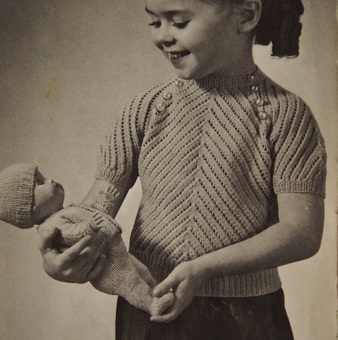 I'm really feeling the graphic lace eyelets on this little girls short sleeve sweater. 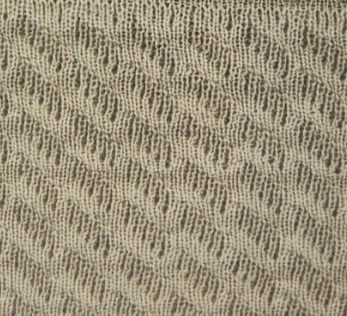 Here are a few images of jacquard double bed structures. I love the diagonal wave pattern that has formed. And in the photo below the combination of eyelets and a kind of ribbed cable is really intriguing.  . 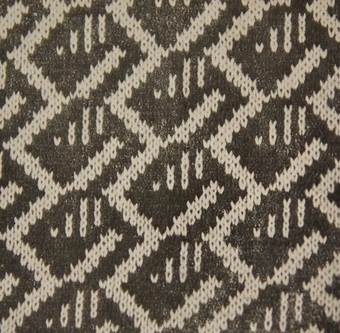 This is a great example of the jacquard patterns available for the MUT and SUPER-OTTO pattern systems for Dubied machines. I picture these in super acidic colours for summer.  And last but not least are some root photos from last weeks daffodil and tulip planting. I was out digging and taking these photos for several hours in the bright sun. I love how the roots have grown in multiple directions. That's all for now:) 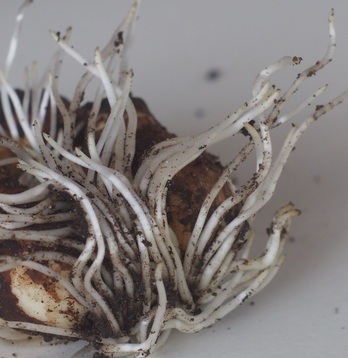 .  .  Hi there. I have some more vintage knitting images for you. These have a very 1960's flavour to them which is a bit different from the 1940's focused patterns I've been into for a while. In terms of fit and finish they are very similar however the aesthetic is quite different. I am drawn to the simple textures and colour blocked elements. Wha Also just a reminder that my draw for a free pair of mittlets will close in less than 24 hours, so enter here. Only a few people have entered so there are pretty good odds!  Here we go again with some more vintage patterns:) These were a wind fall from a retired professional hand knitter. There are some very charming surface textures as well as novel crochet/ knit mixing. As well as some great sideways knitted garments in the baby clothes photos below. There is just too much content to present in one post so I will add more in the coming weeks. Its hard to express how I feel about these acquisitions. I seem to collect books and equipment which are of course technically interesting but which represent the passing of a craft technology skill that should not be disappearing. In fact the majority of my more interesting equipment/ materials have been acquired from individuals over 70 years of age. At some point I'd like to talk about where these people worked and came from and how craft technology was something they built a career around, but I think this post is great as an inspirational one.  Recently Susan from Knitcloud contacted me and gifted me with an English version of an Italian language Dubied pattern book I already had (thank you Susan!). Translating from the Italian only goes so far and resulted in some rather confusing wording. I've decided to post some of the instructions and patterns as they are so charming. 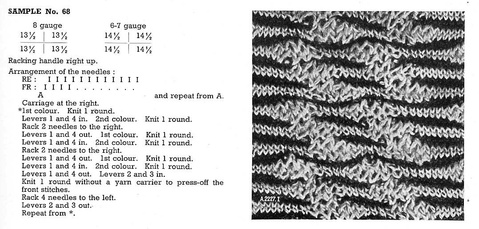 This pattern book is meant for early low butt double bed machines so there are no high/low butt combinations. Still one can use, adapt and transform the basic format of these patterns in endless ways.  For clarity, when the instruction say "levers" in or out, what it is talking about are your cams which change from rib to tubular. So when a lever is out it is in a rib formation and when it is in, it is in a tubular formation. So if you look at the sample #68 it is alternating tubular and rib as well as racking the beds. Such an interesting pattern!  For those so inclined to use them, I do think the patterns speak for themselves. You can click on each one for a larger image and print/ save as needed. I will be posting them to my wiki for further ease of use. Earlier I talked about an Autocam Part 2 posting, and it is coming, but I am concentrating on finishing what has turned out to be a tricky Fall 2013 collection. So once I have that completed I'll put out some information on the Autocam. I do think this format of pattern posting is quite fun too so I'll be mining some of my books, notes and antique magazines for more!  My search for sustainable design and technology, has over the years led me both backwards (in technology) and forwards in terms of sustaining my own design practise...a practise rooted in analog, non powered, and intuitive approaches. This has slowly led me to explore knitwear machinery as an alternative to modern textile technology despite my roots in apparel design and textile printing. When I purchased my MM Dubied, a simple machine from the 1930's, it came with some 1954 editions of the Italian magazine "Estate, " in the back it featured advertisements for the Discam and the Autocam. When I graduated to the more complicated NHF4 Dubied I realized that the odd contraptions in the advertisements could help me speed up pattern selection, all without having to learn complex computer programming or buy expensive software. Pattern selection on these manual machines requires mental counting, time consuming hand toggling actions and a high degree of concentration so you don't lose your place. This is where Autocams come in. 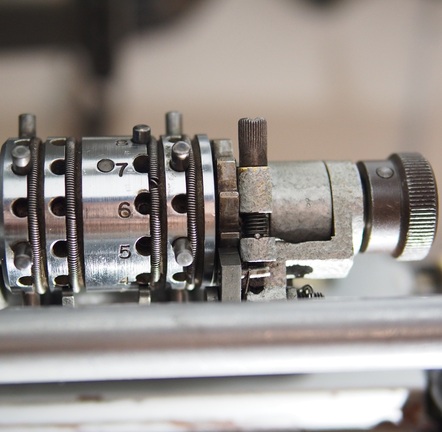 Autocams are drum pattern devices that attach in pairs to the Dubied or Santagostino carriage, they modify stitches much like a punch card does. Discams are pattern devices based upon the disk format. They hold less information than autocams but operate based upon the same principle. The autocam is a drum with pegs of different sizes and positions which rotates one stop like a typewriter. For every pass of the carriage, cams are selected via fingers, also much like typewriter keys which change cam positions. For me there is an imagery format mashup of player piano drums, music boxes, machine knit and computer punch cards, typewriter selectors and clock gears. These formats were such logical straightforward approaches to the problem of mechanical selection. Their fall from favour was a side effect of the technology revolution but also major changes in fashion. See Sandy Black's book: Knitting: Fashion, Industry, Craft for more on this.  So why is this a Part 1? Well, I just recently installed an Autocam after spending some time with my very knowledge dad Edmund, who is a clockmaker. He helped me gut, clean and install the necessary parts into a Dubied carriage. Part 2 will be about using and changing the pegs!  The autocam rides on the carriage top, but it also requires longer cams so that the fingers can push select the cams. That is why we had to gut the carriage: to replace the cams and add fittings for securing the autocam.  Here's the underside of the carriage before it is stripped down.  Here's the very dirty interior of the carriage. I was shocked at all of that fluff and grime! Eww. Obviously we cleaned it up using a toothbrush and some gasoline and it looked much better.  Here's the completely gutted carriage. We are reassembling the tension assembly. We had to take it apart because the new cams are physically linked to parts of the tension.  Here the new washer has been installed for the longer cams and it has been linked to the tension assembly.  And here the Autocam has been screwed onto the carriage. The new cams need to be fitted where the old ones were and then the cam plate can be screwed back onto the underside of the carriage. 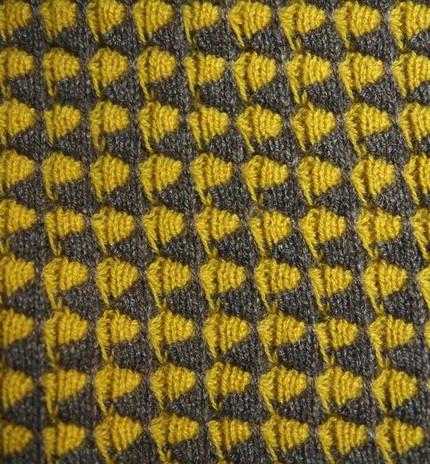 I hope this wasn't too geeky for you. I am excited about this contraption because I won't lose my place on patterns like the one to the right. It also means that really complicated patterns which require constant cam switching will be fun instead of frustrating.  I found these lovely knitting magazines from 1934-35 and I just had to share them:) The style expressed in Lavori Di Maglieria shows an energy and movement in the swatch patterns which I find so charming and the colour palettes seem very contemporary.What is interesting to me is the way knitted fabric is used through a blend of somewhat tailored forms and cut and sew methods. Of course, rib banding is used to finish necks and edges but the combined result is knitwear that looks refined in a manner not always seen in contemporary knitwear. I should qualify that by saying refined knitwear may be seen from the output of computerized industrial machinery, but from the perspective of a crafts-person working in a more analog, manual way, these examples made on industrial flat beds are inspiring and heartening. These magazines may have served to showcase current fashion in knitwear but they also showcased new technology and knitwear advancements through the fashion. There are articles on Dubied MUT jacquard machines and later in the 1950's these types of magazines discuss Discam and Autocam carriage accessories for speeding up cam pattern combinations while knitting. I have amassed a small library of these magazines however I have not come across any beyond the 1960's. I feel this is connected to the rise of computerized industrial machinery in the late 1950's and the difficulties of artisinal knitted work competing against such speed as was found in the most advanced machines of the day. I hope you enjoy these images. |
Anna is a Hamilton based knitwear and textile practitioner blogging about her collection development as well as pre-1950's knitwear technology.
Links
Emma Gerard Make something bookhou Iben Hoej krystalspeck workshop bespoke truckee amy lawrence designs Categories
All
|











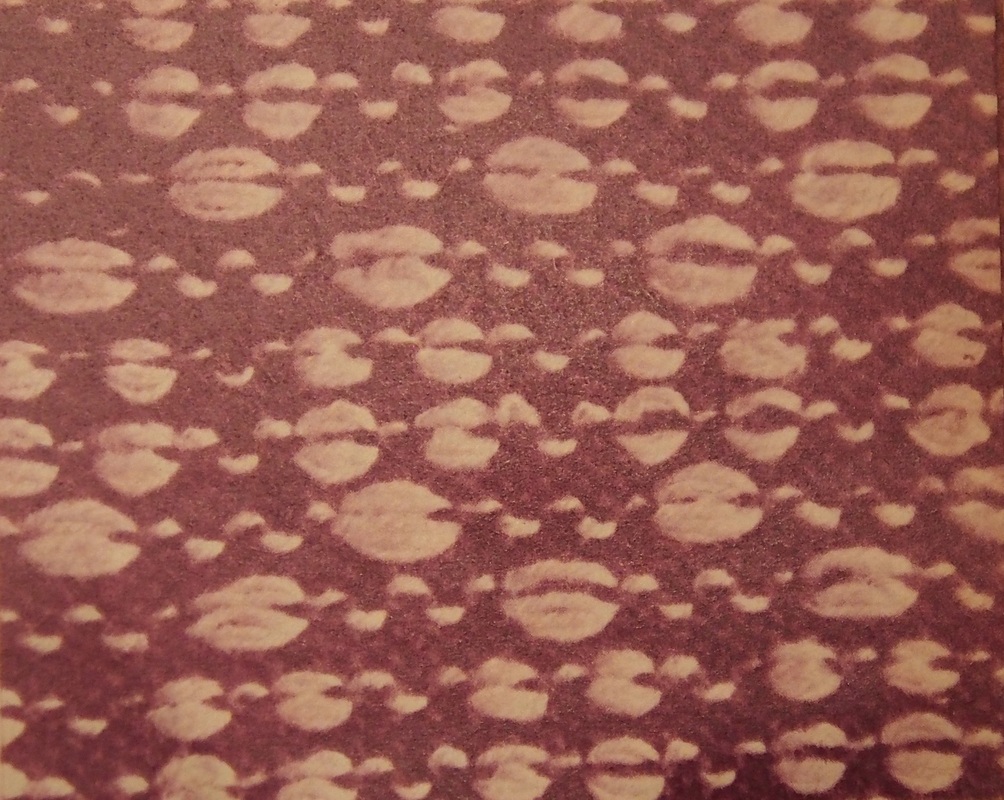
















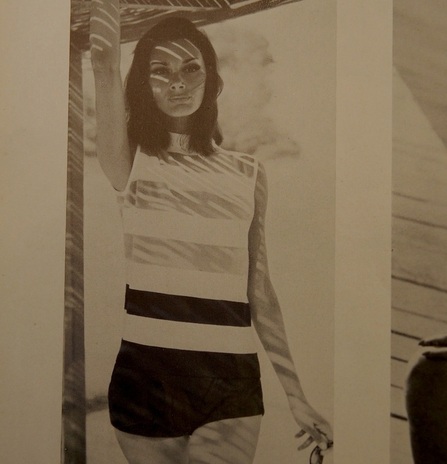


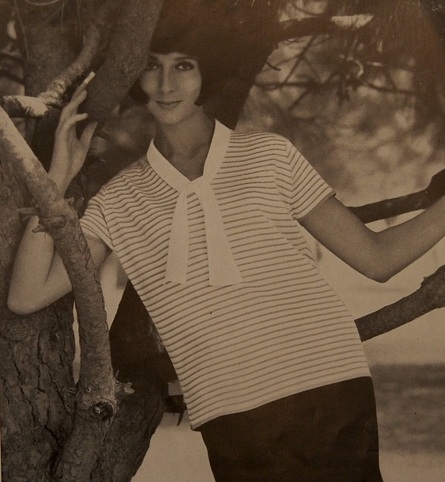


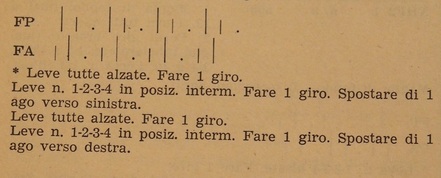
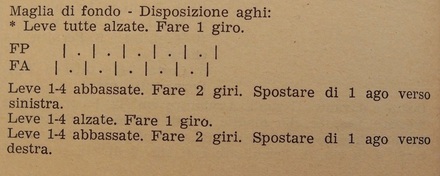
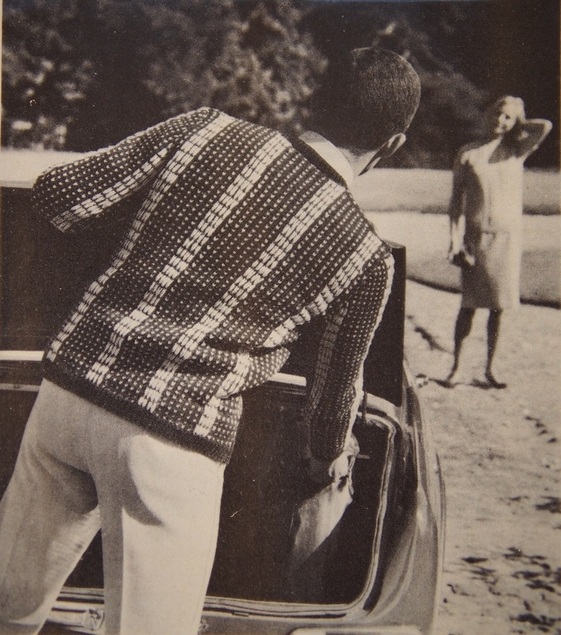



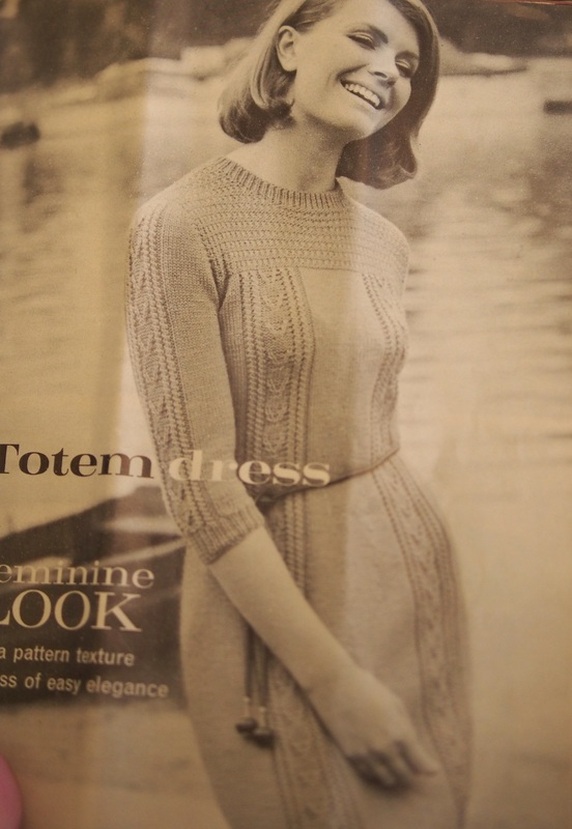


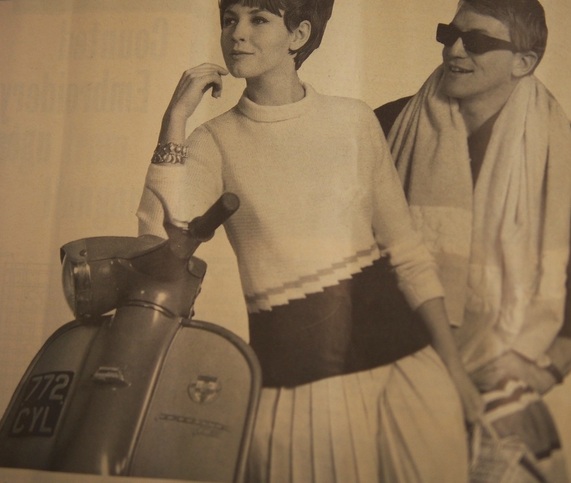










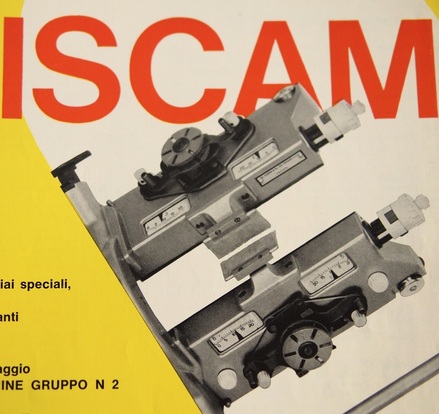









 RSS Feed
RSS Feed